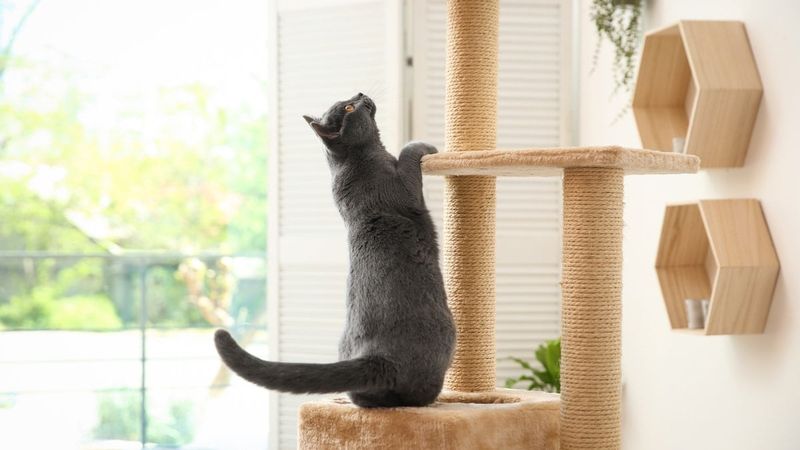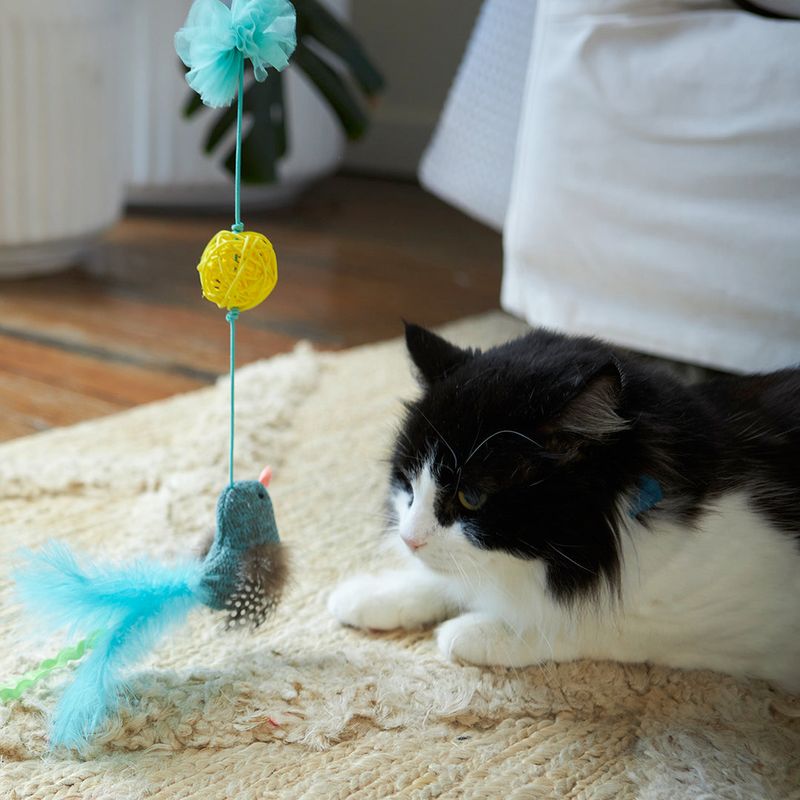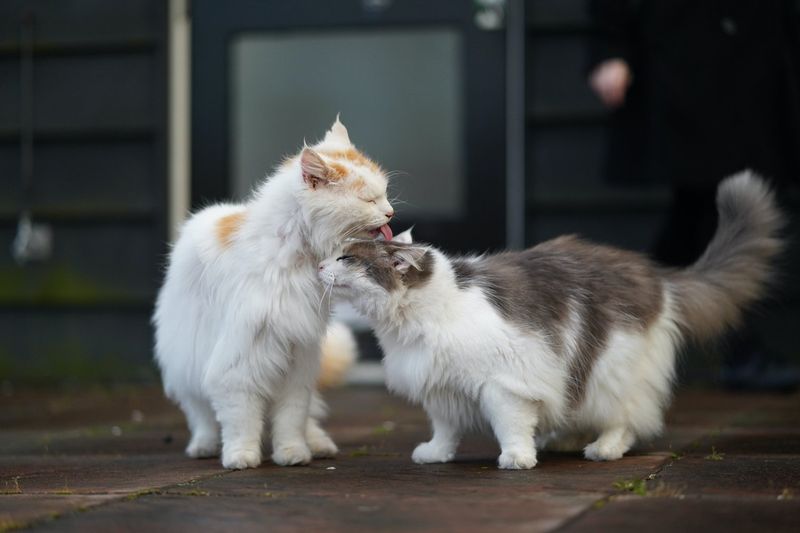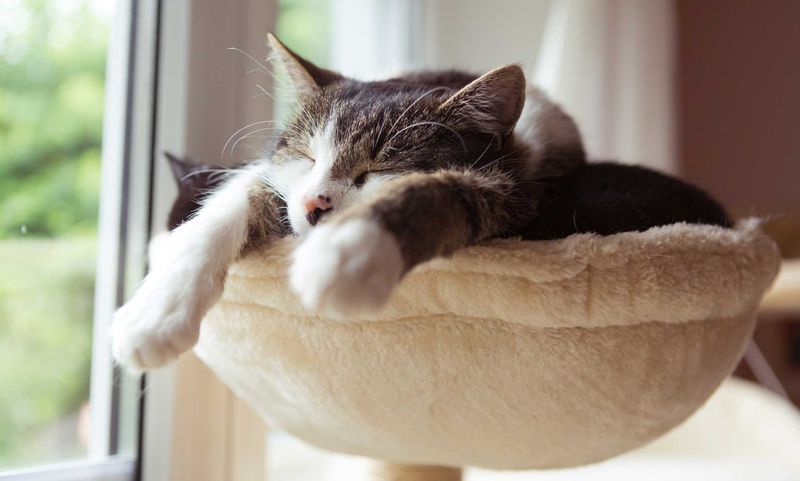📖 Table of Content:
- 1. Establish a Quiet Safe Zone
- 2. Maintain Consistent Feeding Times
- 3. Use Gentle Voice Tones
- 4. Respect Their Personal Space
- 5. Create Predictable Routines
- 6. Offer Vertical Territory
- 7. Use Pheromone Products
- 8. Provide Multiple Hiding Spots
- 9. Engage in Interactive Play
- 10. Introduce Scent Swapping
- 11. Keep Litter Boxes Clean and Accessible
- 12. Offer Scratch-Friendly Surfaces
- 13. Use Positive Reinforcement Only
- 14. Minimize Household Changes
- 15. Provide Background Noise Consistency
Bringing a rescue cat home is just the beginning of their healing journey. These furry friends often arrive with emotional scars from past experiences that require patience and understanding. Creating a safe environment helps them transition from survival mode to feeling secure in their forever home. With some thoughtful habits, you can help your rescue kitty learn to trust again.
1. Establish a Quiet Safe Zone
Every rescue cat needs their personal retreat. Set up a cozy corner with a soft bed, blanket, and a few toys where your new friend can escape when feeling overwhelmed.
Cats naturally seek elevated spots where they can observe their surroundings while feeling protected. A cat tree or shelf near a window offers both security and entertainment.
Leave this space undisturbed and teach children that this is the kitty’s private area. This boundary respect helps your cat understand they have control over their environment—something many rescue cats have never experienced before.
2. Maintain Consistent Feeding Times
Regular mealtimes create a reliable structure that helps anxious rescue cats relax. When cats know exactly when food arrives, they spend less energy worrying about their next meal.
Food security is especially important for cats who have experienced neglect or starvation. Place food bowls in quiet locations away from high-traffic areas or loud appliances that might startle your kitty during meals.
Many rescue cats guard their food or eat too quickly at first. Give them space while eating and consider puzzle feeders that slow down mealtime, creating positive mental stimulation while addressing food anxiety.
3. Use Gentle Voice Tones
The sound of your voice significantly impacts your rescue cat’s comfort level. Soft, gentle tones help nervous kitties understand they’re in a peaceful environment.
Avoid sudden loud noises or shouting, which can trigger fear responses in cats with traumatic backgrounds. Some rescues associate loud voices with punishment or danger.
Try reading aloud in a calm voice while your cat is nearby but not interacting directly. This passive bonding technique helps them associate your voice with safety without feeling pressured to engage, gradually building trust through sound familiarity.
4. Respect Their Personal Space
Forcing interaction is the fastest way to break trust with a rescue cat. Allow them to approach you on their terms, which might take days or even weeks, depending on their past experiences.
Body language speaks volumes to cats. Sitting on the floor at their level with your body turned slightly away signals you’re not a threat. Slow blinking communicates safety in cat language.
Resist the urge to pick up or pet a hesitant cat. Instead, place treats near you and gradually decrease the distance as they become comfortable. This patient approach honors their boundaries while building positive associations with your presence.
5. Create Predictable Routines
Rescue cats thrive when they can anticipate what happens next. Consistent daily schedules for feeding, play, and quiet times help anxious kitties feel more secure in their environment.
Sudden changes can trigger stress responses in cats with traumatic backgrounds. When possible, maintain similar waking times, bedtimes, and general household activities.
If you need to introduce changes like visitors or rearranging furniture, do so gradually. Small, predictable steps help your rescue cat adapt without feeling overwhelmed, reinforcing their growing sense that their new home is a stable, trustworthy place.
6. Offer Vertical Territory
Vertical spaces transform a rescue cat’s world by providing safety through elevation. Cat trees, shelves, and perches satisfy their natural instinct to climb while giving them escape routes from perceived threats.
Height equals security in feline psychology. A cat who can observe their surroundings from above feels more in control of their environment, especially important for those who previously lived in chaotic or threatening situations.
Strategic placement matters too. Position climbing structures near windows for enrichment but away from loud appliances or doors that might startle them. This combination of height advantage and thoughtful placement helps rebuild their confidence.
7. Use Pheromone Products
Synthetic feline pheromones mimic the natural comforting signals cats produce when they feel secure. Diffusers, sprays, and wipes containing these compounds can significantly reduce anxiety in rescue cats adjusting to new environments.
These products work by sending chemical messages that tell your cat “this place is safe” even before they’ve had time to build positive associations themselves. Many veterinarians recommend them specifically for rescue situations.
Focus the application on areas where your cat spends most time or seems particularly nervous. Doorways, new furniture, carrier entrances, and hiding spots can all benefit from these calming signals, creating an invisible safety net throughout your home.
8. Provide Multiple Hiding Spots
Hiding isn’t just a fear response—it’s a vital coping mechanism for rescue cats. Strategic hiding spots throughout your home give them control over their exposure level and stress management.
Covered beds, cardboard boxes with entrance holes, and specially designed cat caves all make excellent sanctuaries. The key is creating options in different rooms so your cat always has somewhere to retreat.
Rather than removing hiding places to force interaction, embrace them as healing tools. A cat who knows they can hide when overwhelmed paradoxically becomes braver about exploring. This security foundation helps them gradually build confidence to venture beyond their safe zones.
9. Engage in Interactive Play
Structured playtime serves multiple healing purposes for rescue cats. Wand toys with feathers or strings allow interaction at a comfortable distance while redirecting nervous energy into positive activity.
Play sessions don’t need to be long—even 5-10 minutes several times daily helps establish healthy routines. For extremely shy cats, try dragging a string toy past their hiding spot without expecting them to emerge fully.
The predator-prey simulation of play satisfies deep instinctual needs while building confidence. As your cat experiences small hunting “victories,” their brain releases feel-good chemicals that counteract stress hormones, gradually rewiring their emotional responses to associate their new home with pleasure rather than fear.
10. Introduce Scent Swapping
Scent communication forms the foundation of feline social bonds. Gently rubbing a soft cloth on your cat’s cheeks to collect their scent, then transferring it to your hands or clothing, helps create a shared “family scent” that promotes security.
For multi-pet households, exchange bedding between animals before face-to-face introductions. This crucial step helps prevent territorial stress by making everyone smell familiar before visual contact occurs.
Leave items carrying your scent near your rescue cat’s favorite spots. A t-shirt you’ve worn placed in their bed creates positive associations while they sleep. This subtle practice accelerates the bonding process by speaking directly to their most developed sense.
11. Keep Litter Boxes Clean and Accessible
Bathroom security ranks among the top priorities for cats recovering from stressful situations. Multiple, easily accessible litter boxes placed in quiet locations help prevent anxiety-induced elimination problems.
The general rule of one box per cat plus one extra works well for rescue situations. Boxes should be placed away from food areas, loud appliances, and high-traffic zones where your cat might feel vulnerable.
Consistent cleaning schedules maintain both hygiene and psychological comfort. A dirty box can trigger stress for cats who associate cleanliness with safety, while scrupulously clean facilities signal respect for their territory and needs—a foundation for building trust.
12. Offer Scratch-Friendly Surfaces
Scratching fulfills both physical and emotional needs for rescue cats. Beyond nail maintenance, it serves as a stress-relieving activity and territory-marking behavior that helps them feel secure in their space.
Various textures appeal to different cats—some prefer sisal rope, others cardboard or carpet. Providing multiple options helps your new companion find their preference while protecting your furniture.
Strategic placement makes a difference too. Position scratching posts near sleeping areas and entry points to rooms, as cats often stretch and scratch after waking or when entering new spaces. This natural behavior outlet helps reduce anxiety while giving them appropriate ways to express their instincts.
13. Use Positive Reinforcement Only
Rescue cats respond dramatically better to reward-based training than any form of punishment. Treats, gentle praise, and play rewards build positive associations without triggering fear responses from past traumas.
Timing matters tremendously when using positive reinforcement. Immediately rewarding desired behaviors helps your cat connect their actions with good outcomes, even something as simple as approaching you voluntarily or using a scratch post.
Completely avoid startling noises, spray bottles, or physical corrections, which can severely damage trust. A rescue cat who associates you exclusively with good experiences will progress much faster toward feeling secure than one who experiences even occasional negative interactions.
14. Minimize Household Changes
Environmental stability provides crucial reassurance for cats recovering from displacement trauma. Keeping furniture arrangements, daily schedules, and household routines consistent helps rescue cats develop confidence in their surroundings.
When changes must occur, introduce them gradually. Moving furniture one piece at a time rather than rearranging an entire room helps prevent overwhelming stress responses. This measured approach respects their need for predictability.
Even seemingly minor changes like new candle scents or rearranged decorations can unsettle sensitive cats. Maintaining a stable core environment while they adjust allows them to establish mental maps of safe spaces, gradually expanding their comfort zone from secure anchor points.
15. Provide Background Noise Consistency
Controlled sound environments help rescue cats adapt to domestic life without being startled. Low-volume background music, nature sounds, or white noise can mask sudden household noises that might trigger fear responses.
Classical music has shown particular benefits for anxious cats in shelter studies. The consistent, gentle patterns provide auditory enrichment without the unpredictable elements that can startle nervous cats.
Television sounds at moderate volumes can also help acclimate rescue cats to human voices and activity sounds. This sound familiarity builds gradually, helping them distinguish between normal household noises and potential threats, a crucial distinction for cats recovering from unstable environments.















